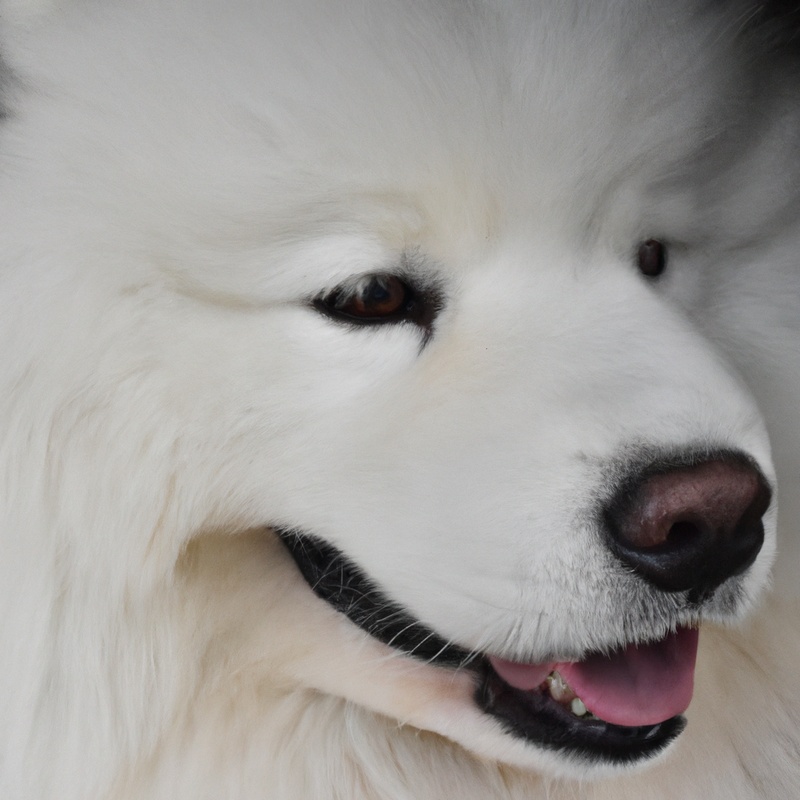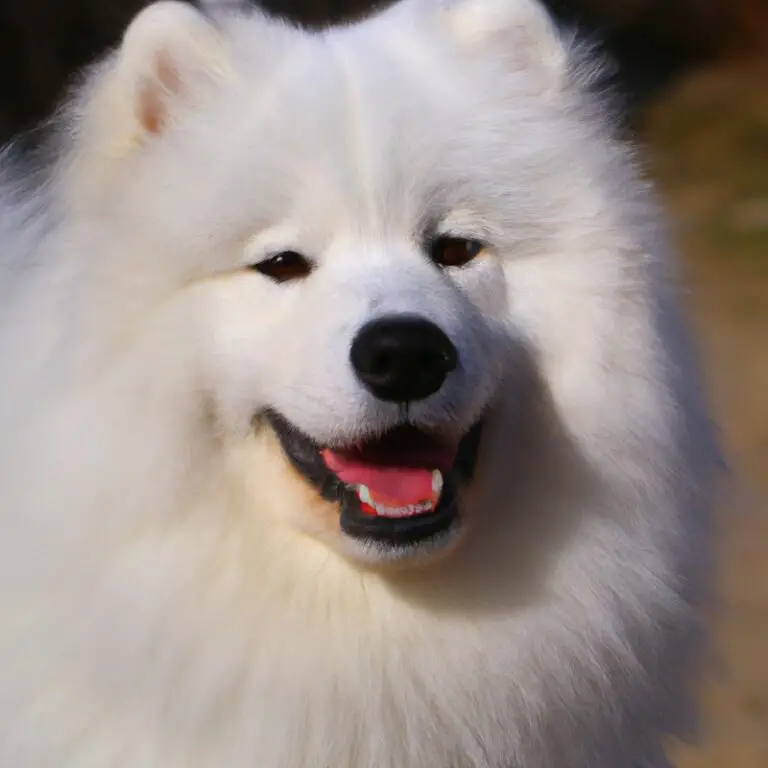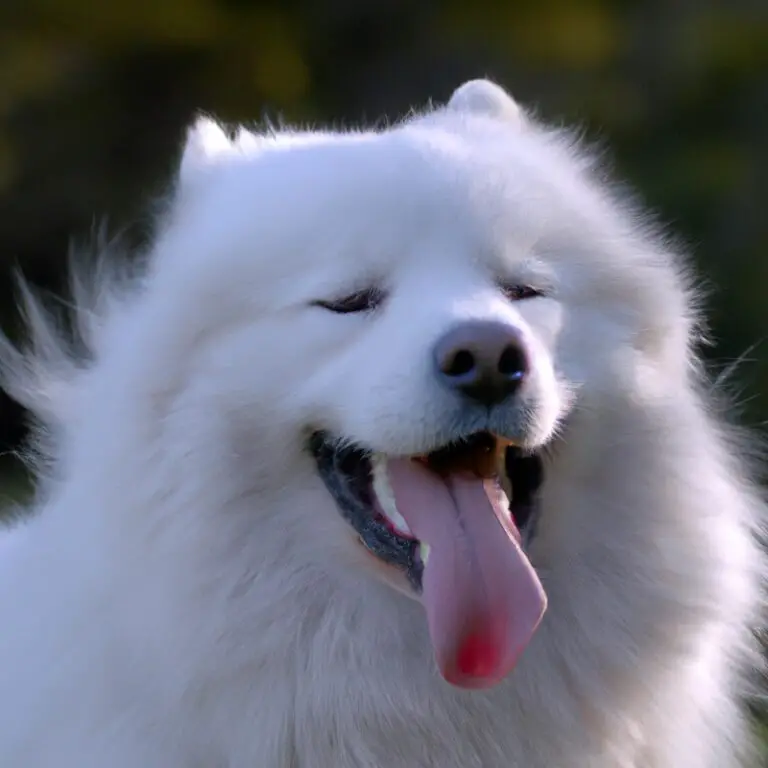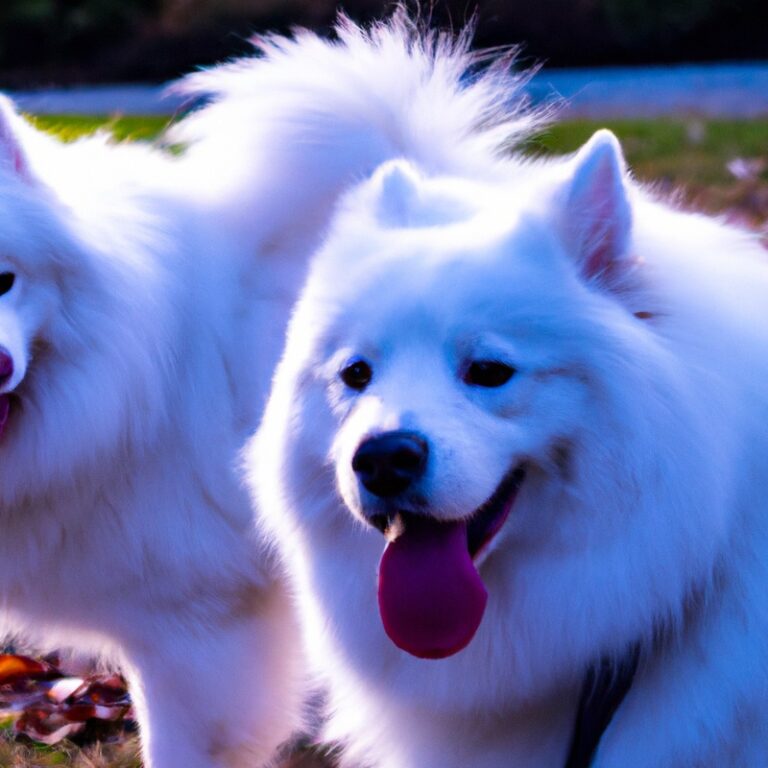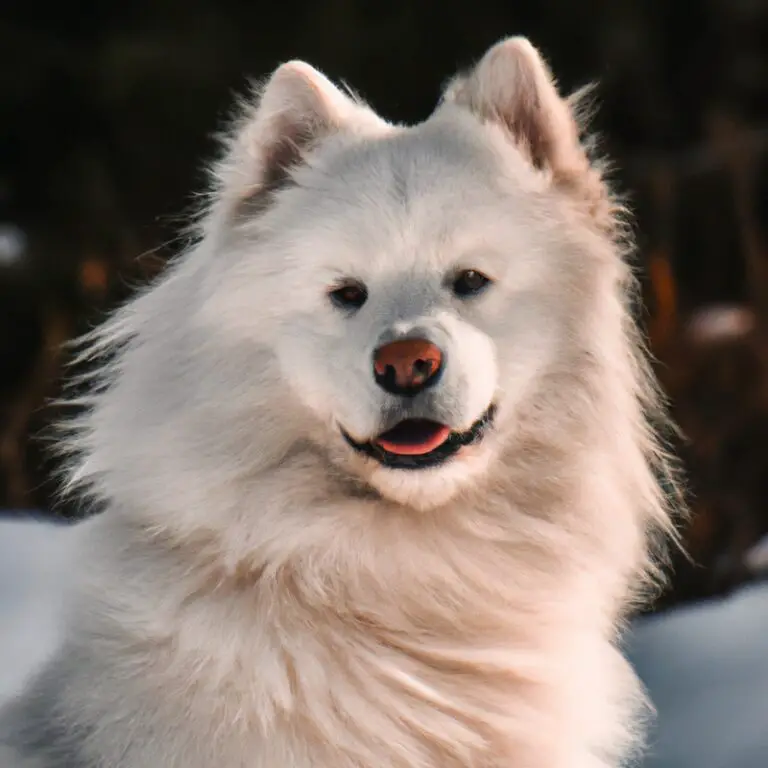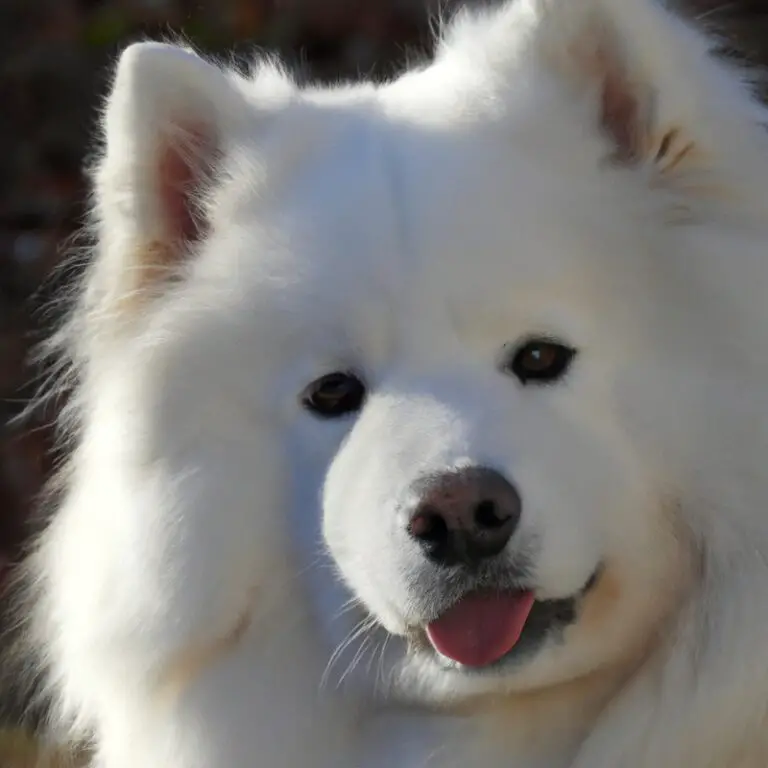How To Deal With Samoyed’s Prey Drive?
Key Takeaways:
- Provide mental and physical stimulation to redirect the Samoyed’s prey drive.
- Teach and reinforce recall commands to maintain a strong control over the dog.
- Utilize positive reinforcement techniques for obedience training and behavior modification.
- Seek professional help if the prey drive becomes uncontrollable or poses a danger to others.
Are you the proud parent of a Samoyed? These fluffy white dogs are undeniably adorable, but they can also come with a strong prey drive that can be challenging to manage.
As an expert in dog behavior and training, I’ve seen firsthand how this instinct can lead to some less than ideal situations.
But fear not! In this article, I’ll guide you through understanding your Samoyed’s prey drive, why they have it, and the signs to look out for. I’ll also share effective techniques and training methods to help you successfully manage and reduce your Samoyed’s prey drive.
Get ready to unleash your dog’s potential and keep everyone safe and happy!
| Solution | Description |
| 1. Supervise outdoor activities | Always supervise your Samoyed when outdoors to prevent it from chasing or hunting small animals. |
| 2. Train a reliable recall command | Teach your Samoyed a strong recall command, like “come” or “here,” to bring it back to you immediately when needed. |
| 3. Provide mental and physical stimulation | Engage your Samoyed in activities like puzzle toys, obedience training, and regular exercise to keep it mentally and physically stimulated. |
| 4. Use positive reinforcement techniques | Reward your Samoyed for displaying appropriate behavior and redirect its attention when it shows signs of prey drive. |
| 5. Use deterrents | Use deterrents like noise-making devices or motion-activated sprinklers to discourage your Samoyed from chasing or hunting small animals. |
| 6. Consult a professional | If the prey drive persists or becomes difficult to manage, consider seeking guidance from a professional dog trainer or animal behaviorist. |
Understanding the Samoyed’s prey drive
What is prey drive in Samoyeds?
Prey drive in Samoyeds refers to their natural instinct and desire to chase, hunt, and capture prey.
It is a strong innate behavior that stems from their original purpose as working dogs in Siberia.
Samoyeds have a high prey drive, which means they may exhibit strong chasing and hunting behaviors towards smaller animals such as squirrels or birds.
This drive can vary in intensity among individual dogs, but it is a characteristic trait of the breed.
It is important for Samoyed owners to be aware of this prey drive and provide appropriate outlets for their dog’s energy and need to chase.
Why do Samoyeds have a strong prey drive?
Samoyeds have a strong prey drive because of their background as working dogs. They were originally bred to help with herding and pulling sleds, which required a certain level of predatory instinct.
This drive to chase and capture prey is a natural behavior for them.
It’s important to understand and manage this instinct through training and providing appropriate outlets, such as games and activities that simulate the chase. Remember, a strong prey drive doesn’t mean they can’t live peacefully with other animals, but it does require proper guidance and supervision.
Signs of prey drive in a Samoyed
The signs of prey drive in a Samoyed can include intense focus on small animals, such as squirrels or birds.
They may exhibit a strong desire to chase and catch these animals, often displaying a high level of energy and determination.
Additionally, a Samoyed with a prey drive may exhibit stalking behavior, crouching low to the ground and moving slowly before pouncing.
It’s important to be aware of these signs and take appropriate measures to manage and redirect their prey drive in a safe and controlled manner.
Managing a Samoyed’s prey drive
Supervised outdoor activities
Supervised outdoor activities are vital for managing a Samoyed’s prey drive.
Here’s how you can make the most of these activities:
- Choose safe and secure areas where your Samoyed can roam freely without escape routes.
- Engage in interactive play sessions to redirect their hunting instincts towards toys or games.
- Use positive reinforcement to reward good behavior and discourage chasing small animals.
- Keep a close eye on your Samoyed during outdoor excursions, ensuring they’re always under supervision.
- Gradually expose them to different environments, gradually increasing the level of distraction.
Remember, supervision during outdoor activities helps ensure your Samoyed’s safety while allowing them to enjoy their natural instincts.
Leash training and recall exercises
Leash training is essential for managing a Samoyed’s prey drive.
Start by getting a comfortable and sturdy leash.
Begin in a calm environment and gradually introduce distractions.
Use positive reinforcement to reward your dog for walking calmly beside you.
Recall exercises are also crucial.
Practice calling your dog’s name and rewarding them when they respond.
Start in a distraction-free area and gradually increase the level of distractions.
Remember to always be patient and consistent in your training.
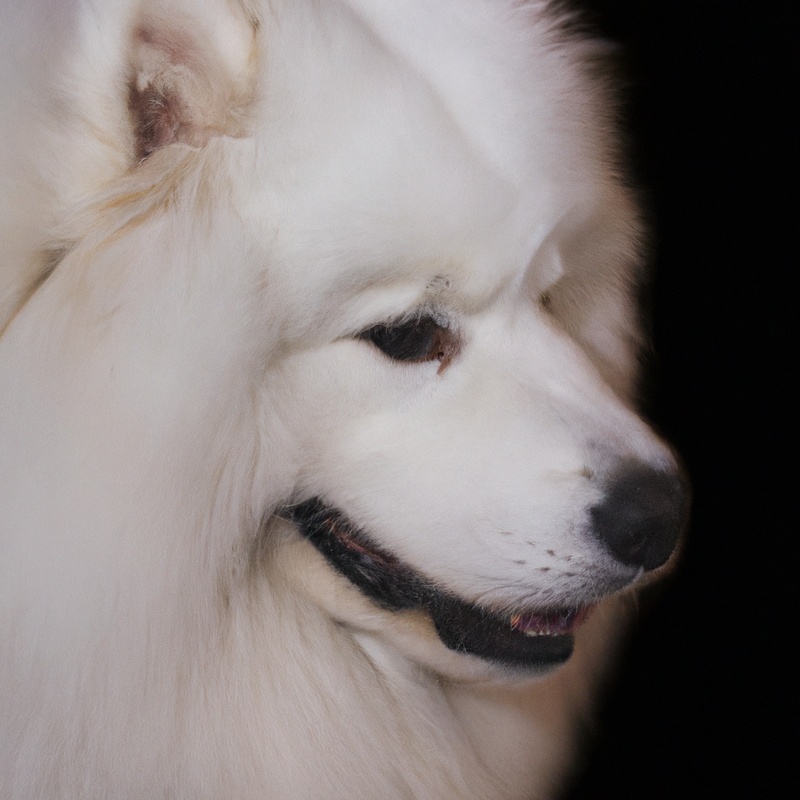
Mental stimulation and enrichment
Mental stimulation and enrichment are essential for managing your Samoyed’s prey drive.
Here are some ideas to keep their minds engaged and satisfy their natural instincts:
- Puzzle toys: Invest in interactive puzzle toys that require your Samoyed to solve a problem or find a treat. This will keep them mentally engaged and focused.
- Training sessions: Engage in regular training sessions with your Samoyed to provide mental stimulation. Teach them new commands or tricks to keep their minds sharp.
- Nose work: Encourage your Samoyed to use their keen sense of smell by participating in nose work activities. Hide treats around the house or play scent games to engage their hunting instincts.
- Agility training: Set up an agility course in your backyard or attend training sessions to keep your Samoyed physically and mentally stimulated. This activity also helps strengthen the bond between you and your furry friend.
- Interactive play: Engage in interactive play sessions with your Samoyed using toys like flirt poles and tug-of-war ropes. This will help expel excess energy and provide mental stimulation.
Remember, mental stimulation and enrichment are crucial for a happy and well-balanced Samoyed.
By incorporating these activities into their daily routine, you can effectively manage their prey drive while keeping them engaged and satisfied.
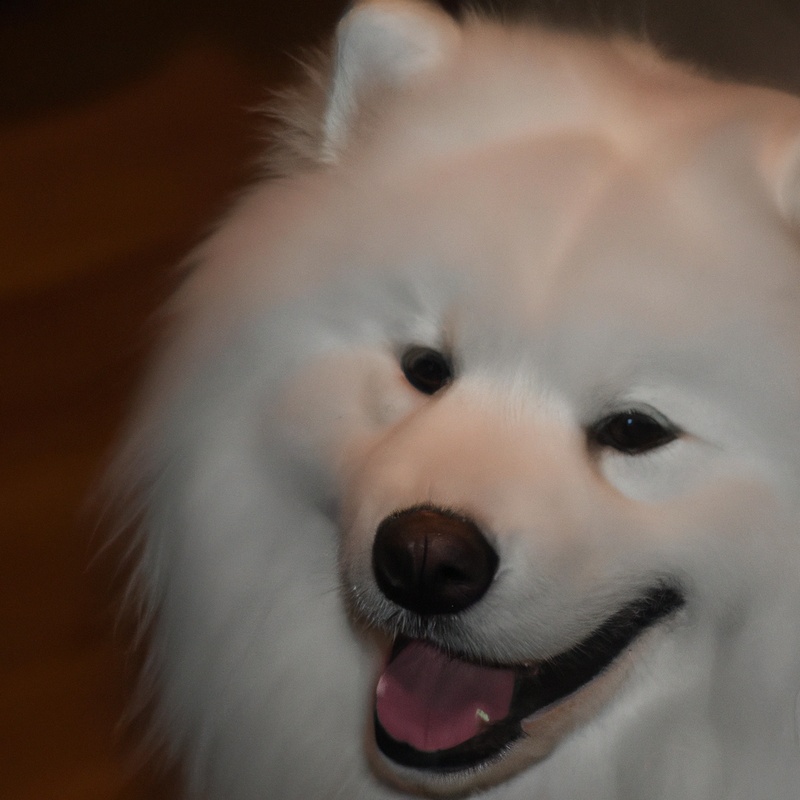
Professional training and behavior modification
Professional training and behavior modification are essential when dealing with a Samoyed’s prey drive.
It’s important to work with a qualified dog trainer who can provide specialized guidance.
Positive reinforcement methods, such as reward-based training, can be effective in redirecting your Samoyed’s focus.
Consistency is key in reinforcing desired behaviors and discouraging unwanted ones.
Additionally, providing mental and physical stimulation can help satisfy their natural instincts.
Patience and understanding are crucial throughout the training process.

Training techniques to reduce prey drive in Samoyeds
Positive reinforcement training methods
Positive reinforcement training methods are highly effective in reducing prey drive in Samoyeds. Focus on rewarding desired behaviors, such as calmness and attentiveness, with treats, praise, and play.
Use treats or toys to redirect their attention from the prey to you.
Gradually increase the difficulty by introducing controlled distractions. Consistency, patience, and ample practice are key to successfully reducing prey drive.
Make sure to provide enough mental and physical stimulation for your Samoyed to minimize the likelihood of intense prey drive behaviors.
Impulse control exercises
Impulse control exercises can be helpful in reducing a Samoyed’s prey drive.
One effective exercise is “wait” or “stay” training, where you teach your Samoyed to pause and control their impulses when presented with a trigger.
Another technique is “leave it” training, which involves teaching your dog to ignore or let go of objects or distractions.
Engaging in interactive games and puzzles, like treat-release toys or hide-and-seek, can also improve impulse control.
Consistency and positive reinforcement are key when practicing these exercises.
Teach “leave it” and “drop it” commands
To teach your Samoyed the “leave it” command, start by placing a treat on the ground and covering it with your hand. When your dog tries to get it, say “leave it” and reward them with a different treat when they back away.
Repeat this until they understand the command.
To teach the “drop it” command, hold a toy or object your dog likes. Say “drop it” and gently take it from their mouth.
Give them a treat and praise.
Gradually increase the value of the item to reinforce the command. Consistency is key!
Redirecting the prey drive towards appropriate activities
To redirect your Samoyed’s prey drive towards appropriate activities, you can try the following techniques:
- Interactive play: Engage your Samoyed in interactive games like fetch or tug-of-war. This allows them to channel their prey drive into activities that are both mentally stimulating and physically exhausting.
- Nose work: Incorporate scent-related activities into your Samoyed’s routine. Hide treats around the house or engage them in scent detection games. This taps into their natural hunting instincts in a positive and controlled environment.
- Training and obedience: Teach your Samoyed basic obedience commands such as “sit,” “stay,” and “leave it.” This not only helps them develop self-control, but it also gives you more control over their behavior when their prey drive kicks in.
- Structured walks: Take your Samoyed on structured walks where you maintain control over their movements. Use a harness or gentle leader to prevent them from pulling and give clear direction throughout the walk.
- Engage in organized sports: Consider participating in organized sports like agility or obedience trials. These activities provide a structured outlet for your Samoyed’s energy and prey drive, while also strengthening your bond with them.
Remember, redirecting your Samoyed’s prey drive takes time and patience.
Consistency is key, so be sure to reinforce positive behaviors and discourage unwanted ones.
Frequently Asked Questions
Are all Samoyeds prone to having a strong prey drive?
Not all Samoyeds are prone to having a strong prey drive. While many Samoyeds do show an instinctual interest in chasing small animals, the intensity of their prey drive can vary from dog to dog.
Some Samoyeds may have a higher prey drive than others, but it ultimately depends on their individual temperament, upbringing, and training.
It’s important to socialize and train your Samoyed to manage their prey drive in a safe and controlled manner.
Can prey drive in Samoyeds be completely eliminated?
No, prey drive in Samoyeds cannot be completely eliminated.
It is a natural instinct deeply ingrained in their genetic makeup.
However, with proper training and management, you can manage and redirect their prey drive in a more controlled manner.
Is it possible for a prey-driven Samoyed to coexist with other pets?
Yes, it is possible for a prey-driven Samoyed to coexist with other pets.
However, it requires careful management, proper training, and supervised interactions.
Provide plenty of exercise and mental stimulation for your Samoyed to reduce their prey drive.
Gradually introduce them to other pets in a controlled setting and reward positive behavior.
Always supervise interactions and separate them if necessary.
Consistency and patience are key in helping your Samoyed and other pets live harmoniously together.
How long does it take to train a Samoyed to manage their prey drive?
Training a Samoyed to manage their prey drive can vary in duration depending on the individual dog and the consistency of training. On average, it can take several weeks to a few months to see significant progress.
It is important to begin training early and use positive reinforcement techniques such as reward-based training and redirecting their focus.
Consistency, patience, and ongoing reinforcement are key to managing a Samoyed’s prey drive successfully. Daily training sessions and continued reinforcement throughout their lifetime will help to ensure long-term success.
Final Verdict
Managing a Samoyed’s prey drive requires a combination of supervision, training, and enrichment.
Understanding the underlying reasons for their strong prey drive is essential in creating effective training techniques.
Through positive reinforcement, impulse control exercises, and redirecting their drive towards appropriate activities, it is possible to reduce and manage their prey drive.
While it may take time and consistency, with the right approach, Samoyeds can coexist with other pets and enjoy supervised outdoor activities.
By implementing these strategies, you can ensure a safe and harmonious environment for both your Samoyed and other animals.

